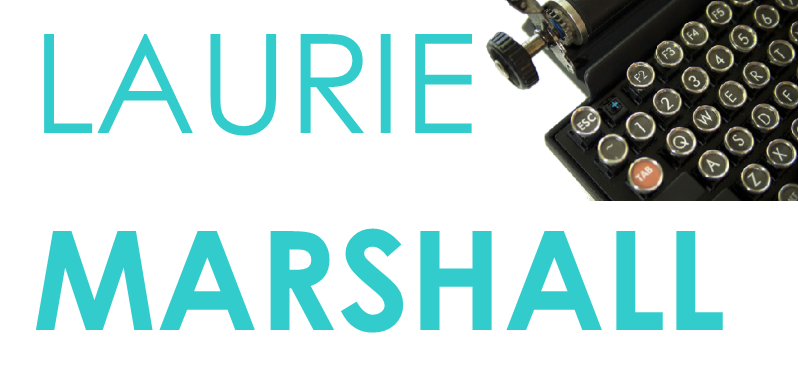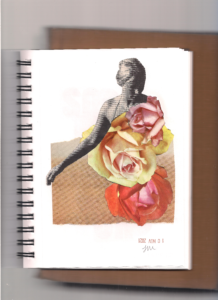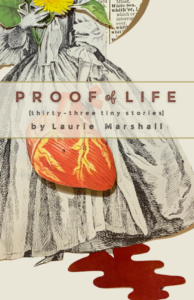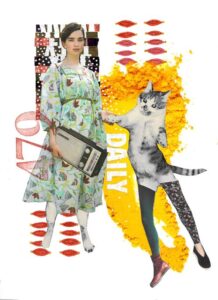In July of last year, I made an appointment with my family doctor to tell him about some arm pain I’d been experiencing when I exerted myself. I was able to do strenuous yard work, or spend a couple of hours cleaning house without needing to rest, but twice, as my family and I were hiking, I experienced shortness of breath and some pain in my left arm. Knowing my grandmother had open heart surgery in her late 40s or early 50s, I decided I probably shouldn’t ignore it.
My doctor had blood work ordered, and we found out my cholesterol level was 247. This is quite a bit higher than the <200 that the American Heart Association recommends. I wasn’t surprised it was elevated, because eighteen months earlier blood tests showed it to be 214, but the 33 point jump in that short of a time period was unexpected.
I convinced my doctor to let me work on my cholesterol without any medication for a few months, so the next step was to have a stress test done. It consisted of walking for three to five minutes on a treadmill while connected to an ekg machine, and the doctor monitoring the results told me what I wanted to hear: Everything looked fine, off you go.
I wish I could have taken his (useless) word for it, but I knew better than to let a doctor tell me what was going on with my body. A whole lot of people would take that news and disappear, not reporting back to their doctor, not pursuing it any further. If they felt pain in the future, they would simply stop doing the thing that caused the pain. For me, it would have meant no more hiking. But I am only 52, and I have a lot more hiking I want to do, and I know from experience that doctors can be wrong. Basically, I’m not a whole lot of people.
My doctor wasn’t satisfied with the results either, so he sent me to a cardiologist to see about having a nuclear test done. This test was ten minutes long, and involved not only the ekg, but also images taken before and after the test that show the blood flow to the heart. At the very end of the test, which also included some inclines on the treadmill, I started to feel some minor pain in my arm.
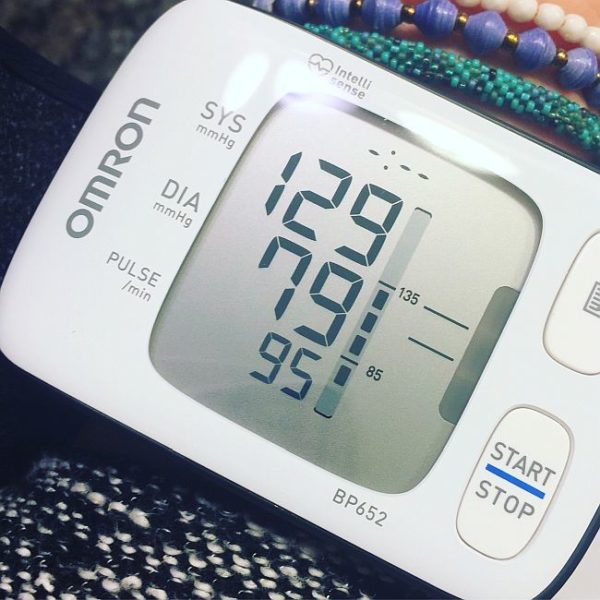
Once again, I was told there was nothing in the images that would indicate any blockages. However, there was a slight abnormality on the ekg at the end of the test, about the same time, I assume, that I started feeling some pain.
The cardiologist said that the next level of investigation would be a heart catheterization. This is where I balked. A heart cath involves putting a tiny wire through an artery in the arm or groin, up into the heart, where it dispenses a dye that can be seen on a monitor by the doctor doing the procedure. If any blockage is found, an angioplasty can be done immediately, blowing up a tiny balloon to open up an artery, and a stent can be placed if necessary.
Wires. In my heart. I’m pretty brave (I had a baby at home, afterall), but the idea freaked me out. I decided I’d rather keep walking daily as I had been since finding out my cholesterol was high, and keep eating a low fat diet. My cardiologist wasn’t pushy, and let me go home and think about it.
Then, I went to Oregon, and everything changed.
Eventually, during one of the visits to the ER for what I was afraid was a heart attack but was only a panic attack, my cardiologist was able to convince me that the rapid heart beat (rhb) I was experiencing had nothing to do with my arm pain – they were two separate issues.
This was a HUGE relief, and helped me compartmentalize the hormone and stress issues that were causing the rhb. From that point on, I was able to deal with anxiety, when it occurred, with some breathing exercises and rest. Those episodes became fewer and fewer.
But I wasn’t walking daily anymore, and I was nervous about getting back to it. Finally, I knew I would not be satisfied until I knew, beyond any doubt, that there was no blockage in my heart. Or, if I had some, I needed to get it fixed. I called my cardiologist’s office and scheduled the heart cath.
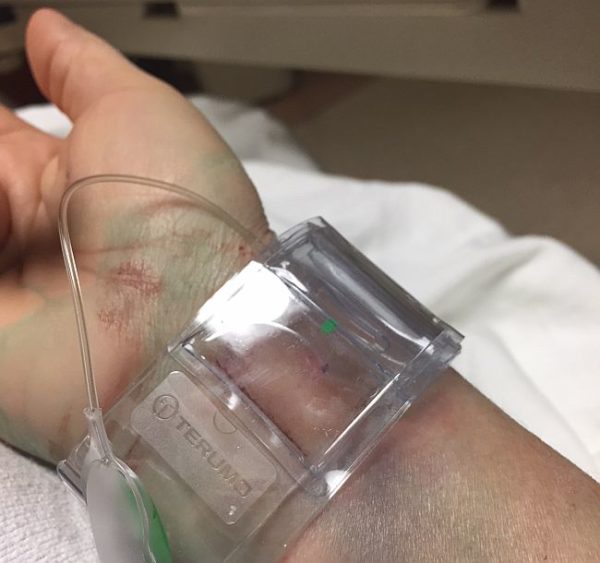
The morning of the procedure, they put me into a drowsy, “twilight” state with anesthesia. I was able to see the doctor, feel pain where the wire was inserted in my arm, and even felt a twinge in my chest as he blew up the angioplasty balloon in one part of my heart. So, I knew at least one stent was placed. But when the doctor told me the procedure was done, and I asked how many blockages he found, I was stunned to hear his reply: five. FIVE!!!!
They only placed three stents, determining that two of the blockages weren’t complete enough to require them. But three was enough. I was devastated.
All that day, I was drowsy from the medications I was on, and emotional about the betrayal I felt from my body. I cried several times about this new reality. I was rarely sick in my whole adult life. The only surgery I’d had was a c-section, and that wasn’t scheduled. I wasn’t an athlete, but I was active(ish), and ate (mostly) well. I am only 52! I was so angry that I would forever be a person with “heart disease”.
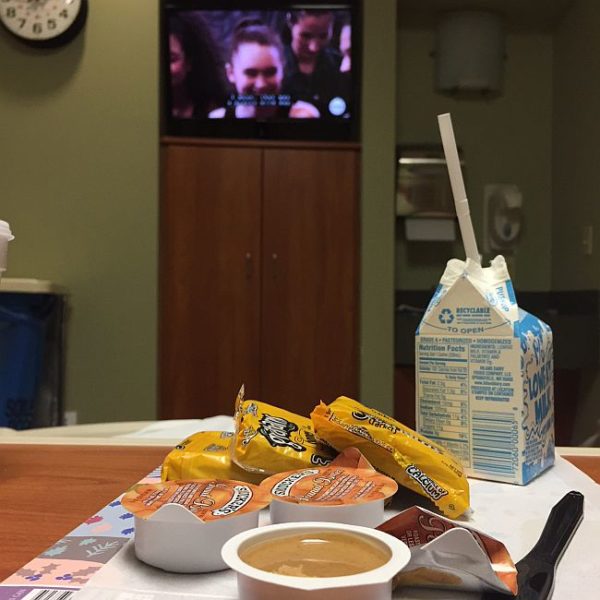
The next day, I woke up feeling somewhat better, but I still wasn’t happy with the idea that I would forever take a small aspirin dose each morning, and that for a year I would be on blood thinners to keep my blood from clotting around the stents. I went from taking no medication except a rare dose of tylenol for aches and pains to three required prescription drugs and two supplements for heart and hormone issues.
Still, I was desperately looking on the bright side and trying to find the positive spin on the situation. I can’t help myself, I’m an optimist.
Saturday after my procedure, my aunt called me. She told me what I didn’t know about my grandmother’s heart disease. Grandma was 53 when she had triple-bypass surgery. One year older than me. And stents are kind of the upgrade from triple-bypass, although they do still do those as well. It just depends on the patient and the kind of blockage they’re dealing with.
Basically, I had the same procedure done, only it was the new-and-improved version.
This was frustrating to hear, because I know that if my mother was alive, she would have warned me when my cholesterol started creeping up. I might have been able to do something about it years ago and avoided having stents. I might have avoided the label and the medications. Just one more reason why losing my mother to cancer was a bitch.
But on the other hand, I also know that grandma had that incredibly invasive surgery – her chest was literally opened up, because that was the way it was done in the 1980s – and she still lived to be 87 years old and died from complications of Parkinson’s disease, not heart disease.

There is no reason why, with continuing advancements in medicine being made every day, I can’t live even longer. I have so much I want to do in this life. I want to die when I’m at least satisfied I’ve done enough, even if I don’t do it all.
I’ve learned that as women, we have to listen to our bodies. Trust our gut. Talk to our mothers (or aunts). Talk to each other. No one is looking out for us but ourselves.
Here’s to a few more decades!!
XOXO


